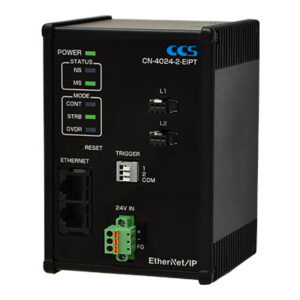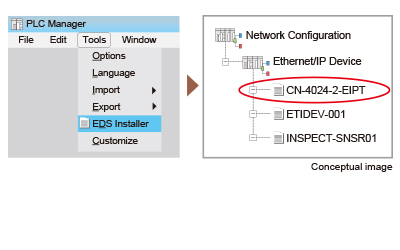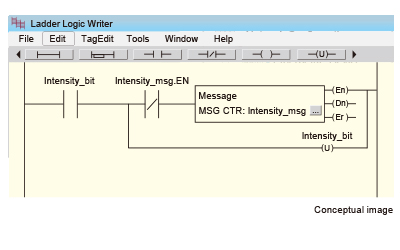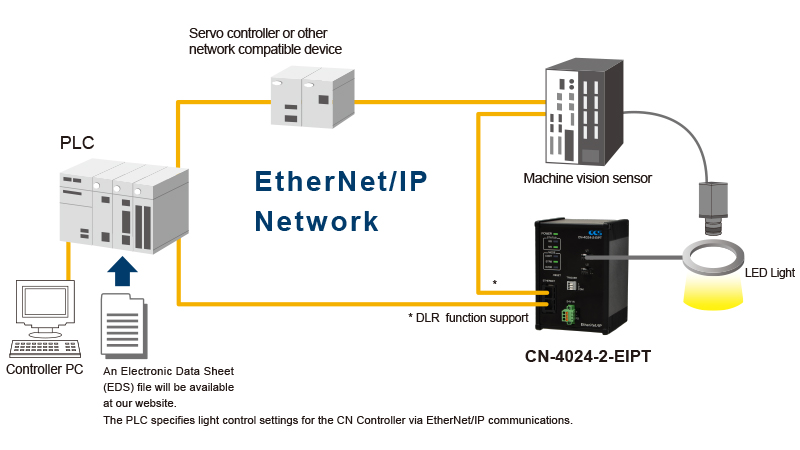
Light intensity and other settings can be controlled with explicit messages via EtherNet/IPTM communications and with I/O commands via TCP/IP communications.
FEATURES
Best Fit for Inspection Systems on EtherNet/IP Networks
- A smart device for the IoT era
- You can get the following values through an EtherNet/IP network:
- Accumulated trigger count, accumulated lighting duration,and error status
- Additionally, you can set and check the following values:
- Lighting mode, trigger logic, ON/OFF setting for the Light Unit, light intensity, strobe time, and lighting delay
- The CN Controller also provides TCP/IP commands for the same operations.
Note: The CN Controller is operated only through external control, and cannot be controlled manually.
- Easy Installation
We will offer an Electronic Data Sheet (EDS) file which describes the communications configuration of the device. Registering the EDS file to a PLC automation system reduces labor and time required for setting up the device.

- Easy Operation
When you use a PLC ladder editor, you can get and set the operation values for the CN Controller.

We offer sample files for PLC programs to support easy operation. The available files are for Rockwell (1769-L16ER-BB1B) and Omron (NX1P2-1040DT).
- Operation Data Output
The following values can be obtained for system operation: Accumulated trigger count which counts the number of Light Unit ON operations, accumulated lighting duration which counts the total period that the Light Unit is ON in hours, and error status.
- DLR Function
The CN Controller is equipped with the Device Level Ring (DLR) function.
Connect two LAN cables to the CN Controller, and if a communications error occurs, the CN Controller will change the communications route immediately.

- Three Selectable Lighting Modes
1. Overdrive Mode
(48 VDC output, Strobe time control: 1 to 1,000 μs, Maximum duty ratio: 7%)
When an external trigger signal is input to the CN Controller, the corresponding Light Unit flashes.
By overdriving the voltage that is applied to the Light Unit, you can make the Light Unit flash a few times brighter than when the Light Units operate in any other lighting modes.

2. Strobe Mode
(24 VDC Output, Strobe time control: 1 to 10,000 μs)
When an external trigger signal is input to the CN Controller, the corresponding Light Unit flashes.
LED Lights can withstand being turned on and off frequently. Turning on the Light Unit only when taking images will reduce heat generation, provide a more stable radiation output, and increase the service life of the Light Unit.

3. Continuous Mode
(24 VDC Output, PWM Control: the light intensity can be set to any of 512 levels. )
The Light Unit will be ON (or OFF) as long as there is an external trigger signal input to the CN Controller.

